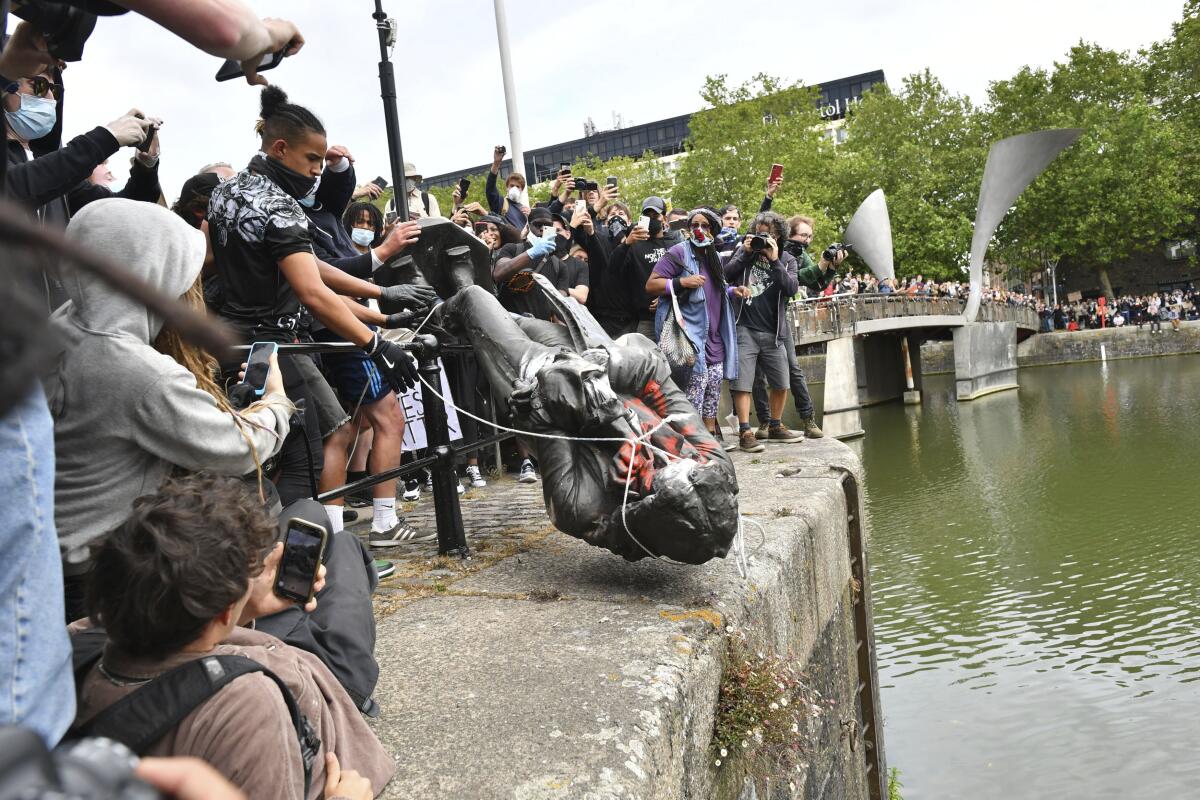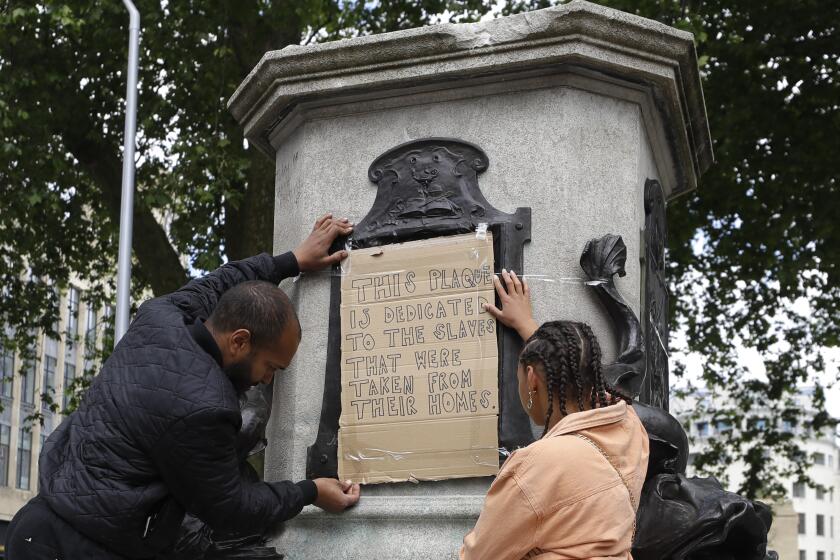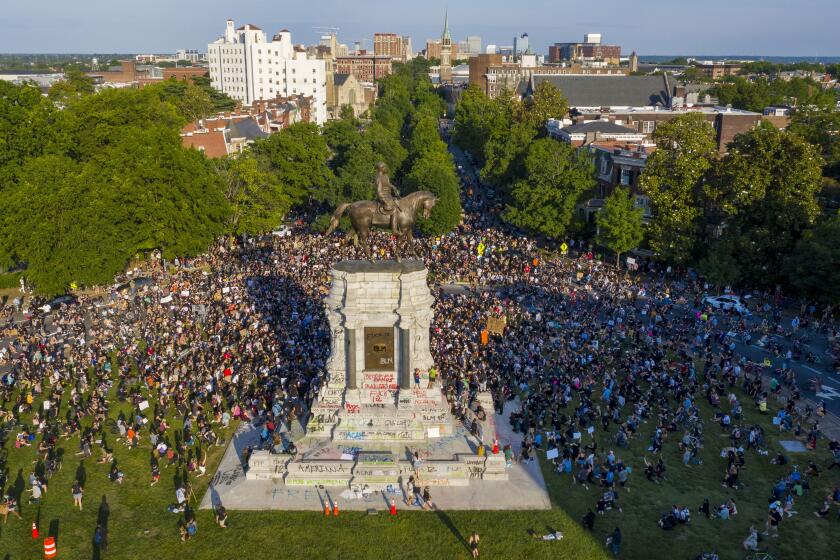Statue of slave trader in U.K. city of Bristol meets its watery end

- Share via
LONDON — For someone who died nearly three centuries ago, Edward Colston has become a symbol for the Black Lives Matter movement in Britain.
The toppling of his statue in Bristol, a city in the southwest of England, on Sunday by anti-racism protesters was greeted with joyous scenes, recognition of the fact that he was a notorious slave trader — a badge of shame in what is one of Britain’s most liberal cities.
Demonstrators attached ropes to the statue before pulling it down. Footage of the moments after the statue crashed to the ground saw hundreds, if not thousands, of local Bristolians in ecstasy.
Images on social media showed protesters then appearing to kneel on the neck of the statue for eight minutes, recalling how George Floyd was killed by Minneapolis police May 25. The statue was then rolled into the nearby Bristol Harbor — again to rapturous scenes.
Police said officers have launched an investigation and are looking for those who “committed an act of criminal damage.”
The symbolism of the statue’s demise can’t be overstated, not least because the walkway overlooking its new resting place is named Pero’s Bridge, after Pero Jones — an enslaved man who lived and died in the city in the latter part of the 18th century.
London’s mayor says statues of imperialist figures could be removed from the city’s streets after a statue of a slave trader was toppled in Bristol.
Colston, who was born in 1636 to a wealthy merchant family, became prominently involved in England’s sole official slaving company at the time, Royal African Co., of which Bristol was at the heart.
The company transported tens of thousands of Africans across the Atlantic Ocean, mainly to work the sugar plantations in the Caribbean and cultivate the tobacco fields that were burgeoning in the new North American colony of Virginia. Each enslaved person had the company’s initials branded onto their chest.
Bristol, as an international port, was at the center of the slave trade and benefited hugely financially — not just shipbuilders and slavers, but also investors like Colston, who would buy a stake in the triangular slave voyage between England, West Africa and the Caribbean.
The bronze memorial, which had been in place since 1895, had been the subject of an 11,000-strong petition to have it removed. Residents, including the city’s large Caribbean community, are ashamed of what Colston represents.
Activists mounted efforts to rename Colston Hall, the largest music venue in the city, among many efforts to “decolonize” the city.
Colston’s name appears on so many public buildings in the city, including educational and economic institutions, in large part because of the sizable donations he made to local charities and organizations.
Southern mayors and Virginia’s governor are striking while the iron is hot, using the unprecedented moment to get it done.
Britain formally abolished the slave trade in 1807 by an act of Parliament, but slavery itself was not formally outlawed in British territories until 1834. Overall, more than 12 million Africans are estimated to have been forcibly taken to the New World, of whom around 2 million are believed to have died en route.
The Colston statue wasn’t the only monument to have been targeted by protesters.
In the Belgian capital of Brussels, where thousands joined a Black Lives Matter rally, protesters clambered Sunday onto the statue of former King Leopold II and chanted “reparations,” according to video posted on social media. The word “shame” was also scrawled on the monument. A bust of Leopold’s in the city of Ghent has also been defaced, daubed in red paint and covered with a cloth scrawled, “I can’t breathe.”
Leopold’s ruthless early rule over Congo from 1885 to 1908 is notorious for its brutality at a time when the Congo Free State was practically his personal fiefdom. At least 10 million Congolese are estimated to have died under his rule as a result of war, starvation and disease. After Leopold handed over Congo to the Belgian state, the tiny European nation continued to hold sway over an area 80 times its size half a world away, until Congo gained its independence in 1960.
And in the U.S., Virginia Gov. Ralph Northam has pledged to remove a statue of Confederate Gen. Robert E. Lee, and Richmond city leaders have committed to taking down the other four Confederate memorials along Monument Avenue.
More to Read
Sign up for Essential California
The most important California stories and recommendations in your inbox every morning.
You may occasionally receive promotional content from the Los Angeles Times.












